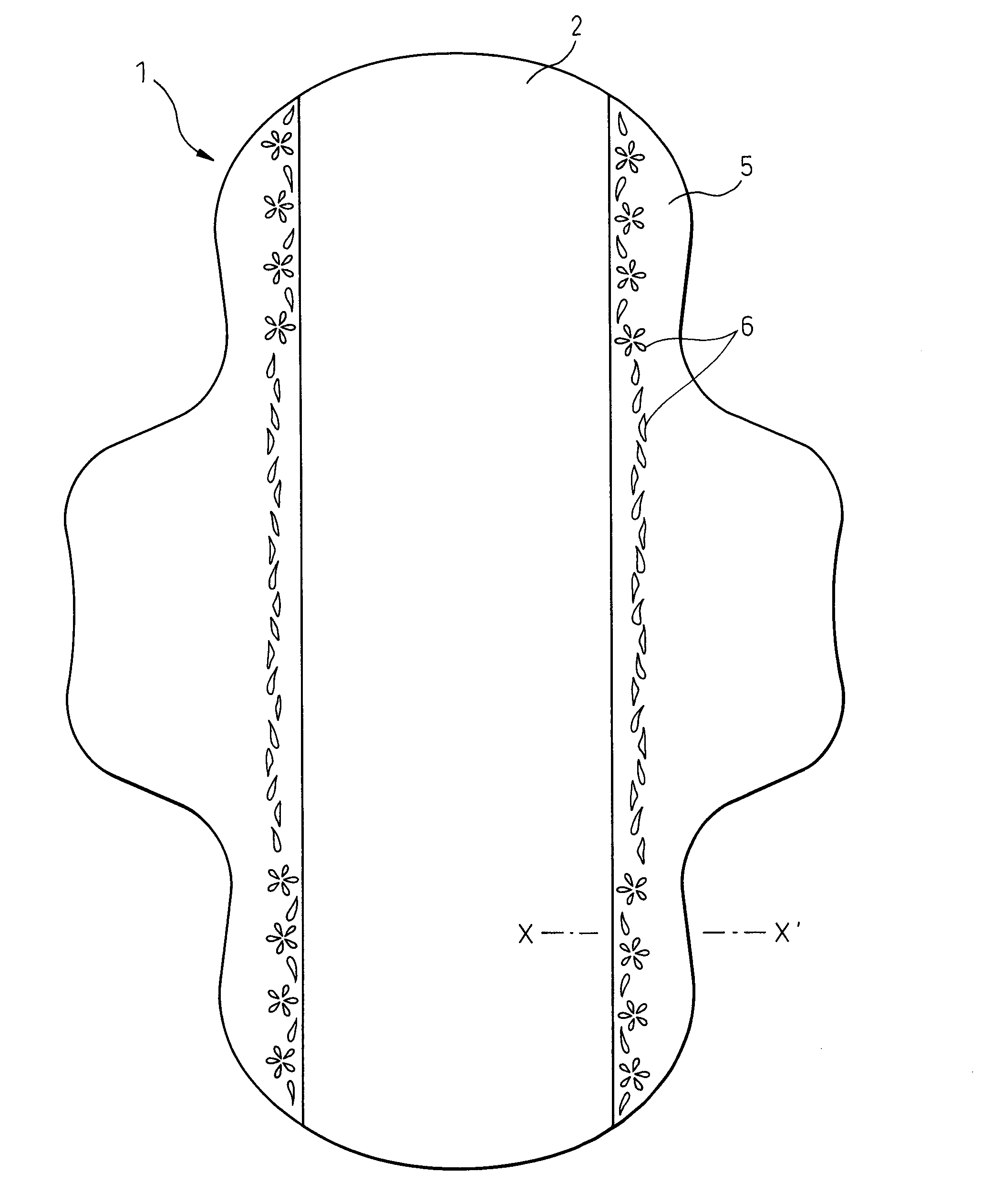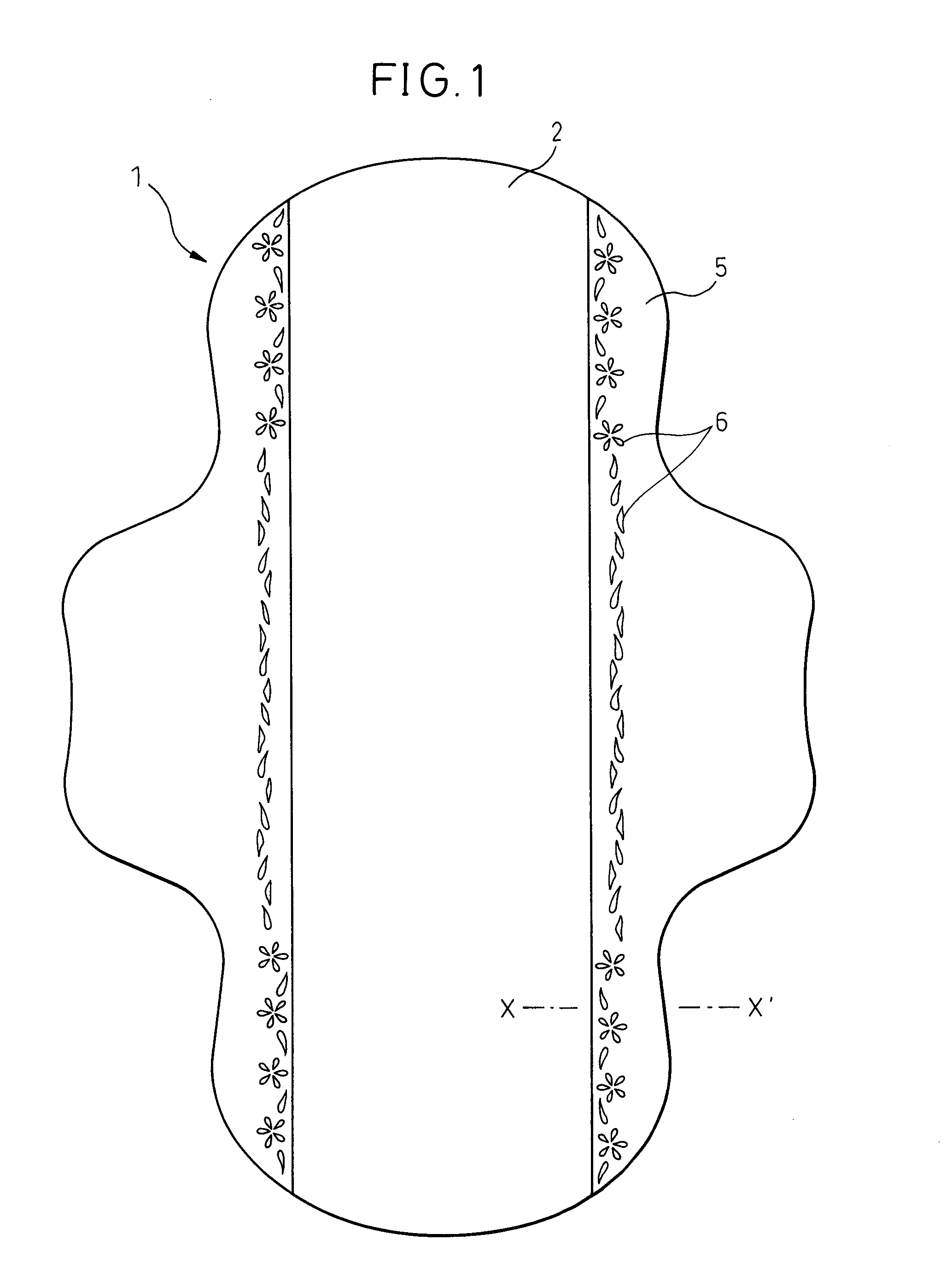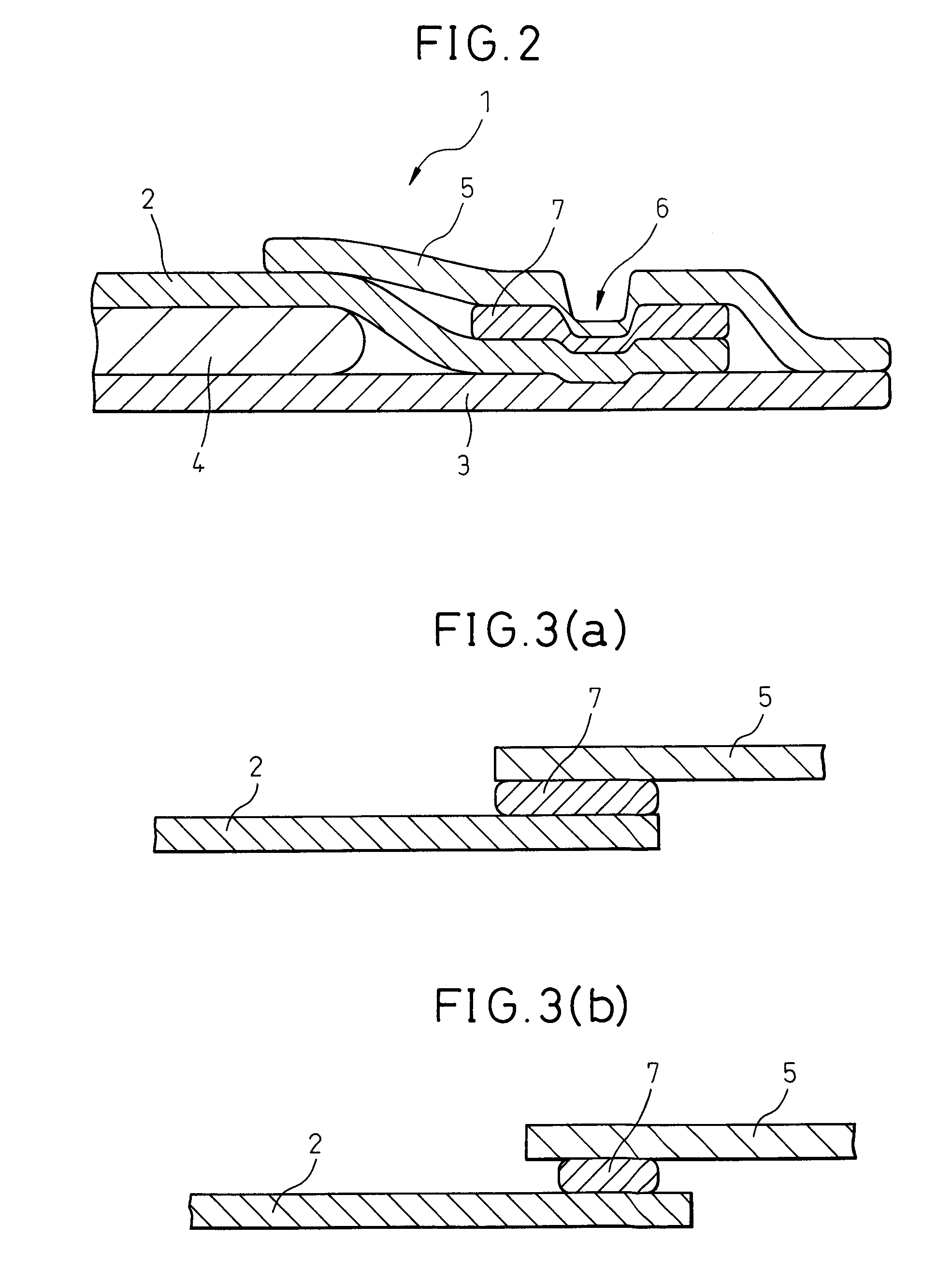Absorbent article with pattern
a technology of absorbent articles and patterns, applied in the field of absorbent articles, can solve the problems of difficult embossed parts, difficult process, and unpractical, and achieve the effect of easy recognition
- Summary
- Abstract
- Description
- Claims
- Application Information
AI Technical Summary
Benefits of technology
Problems solved by technology
Method used
Image
Examples
example 1
[0060]The sanitary napkin having a layer construction illustrated in the schematic cross-sectional view of FIG. 5 and having an appearance shape illustrated in the plan view of FIG. 1 was produced as follows.
[0061]A colored layer was coated on the edge of one side in the longitudinal direction of side sheets 5. For the colored layer, a material obtained by mixing 1 part by weight of Blue No. 404 as a colorant with 100 parts by weight of a hot-melt resin containing a styrene-butadiene-styrene block copolymer as the base polymer was used. As illustrated in FIG. 5, the portion of the side sheet, where the colored layer was provided, was turned back.
[0062]A second liquid-permeable sheet 9, a liquid-permeable sheet 2 and side sheets 5 were stacked in the order illustrated in FIG. 5. One sheet of the side sheet 5 was then disposed on each of the right and left sides such that the turned-back portion was overlapped by a width of 10 mm with each of the right and left both edges of the liqui...
example 2
[0065]Side sheets formed from various materials were evaluated for the thickness, the color difference (difference in the degree to which the color is seen through when the colored layer was stacked) and the entire light transmittance.
[0066]The materials prepared were an air-through nonwoven fabric (AT), a spunbonded fabric (PPSB), a film (material: polyethylene, thickness: about 30 μm), and a perforated film (PFW) (material: low-density polyethylene, thickness:about 0.45 mm, opening ratio: about 30%), and as for the air-through non-woven fabric, 5 kinds of fabrics were prepared, i.e., a fabric obtained by recovering a fiber having a fiber diameter of 2.2 dtex and a basis weight of 27 with aging to increase the bulk (AT1), a fabric having a fiber diameter of 1.6 dtex and a basis weight of 27 (AT2), a fabric having a fiber diameter of 1.6 dtex and a basis weight of 30 (AT3), a fabric having a fiber diameter of 2.2 dtex and a basis weight of 25 (AT4), and a fabric having a fiber diame...
example 3
[0081]An embossed sample was prepared using a colorant-mixed hot-melt resin, and how the color in the recess part looked was confirmed. A hot-melt resin using a styrene-butadiene-styrene block copolymer as the base polymer was used as the hot-melt resin, Blue No. 404 was used as the colorant, 5 kinds of colored hot-melt resins differing in the mixing ratio of the colorant (parts by weight of the colorant based on 100 parts by weight of the hot-melt resin) were prepared, and samples varied in color by changing the basis weight at coating were further prepared. An air-through nonwoven fabric (PET / PE, 27 gsm, titanium oxide was blended in a ratio of 2% based on the weight of the fiber) was stacked on the sample, and the stack was embossed. The color in the embossed part and the color in the non-embossed part were compared, and the color of the embossed part and the degree of see-through vision of the non-embossed part were evaluated.
[0082]A: Distinct difference in color and little see-...
PUM
| Property | Measurement | Unit |
|---|---|---|
| Percent by mass | aaaaa | aaaaa |
| Percent by mass | aaaaa | aaaaa |
| Thickness | aaaaa | aaaaa |
Abstract
Description
Claims
Application Information
 Login to View More
Login to View More - Generate Ideas
- Intellectual Property
- Life Sciences
- Materials
- Tech Scout
- Unparalleled Data Quality
- Higher Quality Content
- 60% Fewer Hallucinations
Browse by: Latest US Patents, China's latest patents, Technical Efficacy Thesaurus, Application Domain, Technology Topic, Popular Technical Reports.
© 2025 PatSnap. All rights reserved.Legal|Privacy policy|Modern Slavery Act Transparency Statement|Sitemap|About US| Contact US: help@patsnap.com



